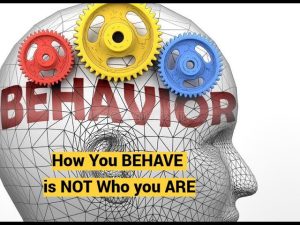3 Steps to Manipulate a People-pleaser
1. Overview of Narcissistic Manipulation Strategies
- Narcissists use two main behavioral patterns to manipulate others: people pleasing and terrorizing. This meeting focused on people pleasing, clarifying that most people pleasers are not narcissists but are nonetheless easily manipulated due to their drive to satisfy others. [00:00]
2. Psychological Characteristics of People Pleasers
- People pleasing involves cognitive distortions such as grandiosity and catastrophizing:
- Grandiosity: People pleasers believe they control others’ happiness and well-being, positioning themselves as crucial to others’ emotional states.
- Catastrophizing: They assume that denying their help would cause disastrous consequences for others, leading to emotional distress or conflict.
- These distortions impair their reality testing and exaggerate their responsibility for others’ emotional states. [02:15]
3. Origin and Cognitive Basis of People Pleasing
- People pleasing often originates from childhood parentification, where children were forced to act as adults or caregivers prematurely, bypassing normal self-development.
- These individuals develop automatic negative thoughts (ANTs) such as:
- “My happiness is always at someone else’s expense.”
- “I have to earn my happiness.”
- “I must bribe people to stay with me or help me.”
- “I need to compromise my boundaries and rights.”
- These thoughts shape their identity, behavior, and perception of relationships. [05:10]
4. Impact of Automatic Thoughts on Behavior and Self-Perception
- People pleasers see themselves as inherently unworthy and difficult to love, resulting in a tendency to minimize their needs and accept self-sacrifice.
- They often become conflict-averse, granting others unrestricted access to their time, energy, and even physical boundaries (e.g., in intimate relationships).
- These ingrained thoughts also make them prone to addiction and compulsive behaviors as forms of “earning” happiness through effort or toil. [12:45]
5. Model of Self-States and Constructs in People Pleasing
- The people pleasing self-state is activated in response to environmental stimuli, which triggers specific internal “constructs” and “introjects” (internal voices).
- These introjects generate automatic thoughts that guide behavior, shaping reality to confirm the self-state and reduce psychological dissonance.
- This self-state mechanism explains the rigidity and unconscious compulsivity of people pleasing behavior. [19:30]
6. Practical Steps for Manipulating People Pleasers
- Three steps to manipulate people pleasers effectively:
- Clearly communicate expectations so the pleaser understands what is required.
- Express pleasure and satisfaction when expectations are met but leave room for doubt and further demands.
- Show profound disappointment or heartbreak when expectations are not met, threatening the relationship to keep the pleaser compliant.
- Following this process can secure a lifelong, self-sacrificial servant-like commitment from the pleaser. [15:50]
7. Broader Implications
- Understanding these mechanisms helps interpret behaviors of promiscuous individuals or those who impose parental roles on others.
- Recognizing the role of self-states and cognitive distortions provides insight into why people pleasers act as they do and how they can be both hurt and manipulated.
- The discussion touches on philosophical and scientific debates about free will, suggesting much of behavior occurs automatically due to mental programming. [23:45]
This detailed summary captures the salient topics discussed, citing the approximate transcript times for reference.






